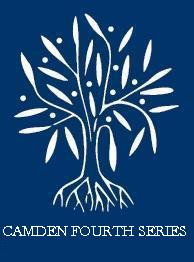No CrossRef data available.
Article contents
2. Wenlok's Household
Published online by Cambridge University Press: 21 December 2009
Abstract

- Type
- Introduction
- Information
- Copyright
- Copyright © Royal Historical Society 1965
References
page 6 note 3 Below, p. 246. The abbot's manors in Worcs. and Gloucs., were known as the Western Parts. (In I. 265 Islip is also treated as a manor of this bailiwick.)
page 6 note 4 Below, p. 28.
page 7 note 1 Below, p. 24, notes.
page 7 note 2 Below, p. 28 and note.
page 7 note 3 Only those grooms who were allotted robes and stipends in the retinue list have been counted.
page 7 note 4 W.A.M. 25934; I. 177, 181; below, p. 210.
page 7 note 5 Below, pp. 167, 174–5, 185. The domestic esquires of the abbot's household are to be distinguished from the holders of the ancient domestic serjeanties at Westminster Abbey. A description of the duties of the serjeanty of the kitchen in 1319 shows clearly that they lay in the convent's kitchen, not in the abbot's (W.A.M. 5886*). Two other serjeanties were redeemed from their lessee during Wenlok's abbacy (Flete, p. 117).Google Scholar
page 7 note 6 Stipends were paid to eleven or twelve domestic servants in 1306 (1.208,231), but the stipends themselves suggest that one or two of these may have been esquires; if so, the number of yeomen and grooms was slightly smaller than it had been in 1289–90. For the fur allowances in 1306 see below, p. 201.
page 8 note 1 I. 143.
page 8 note 2 Below, p. 228. See also Westminster Domesday, fo. 306. In 1218–19 the General Chapter of the Province of Canterbury decreed that abbatial retinues should not normally exceed twenty horses (General and Provincial Chapters of the English Slack Monks, 1215–1540, ed. Pantin, W. A. (Camden Third Ser., xlv, xlvii, liv), i (1931), p. 9).Google Scholar
page 8 note 3 Stenton, F. M., First Century of English Feudalism, 1066–1166 (2nd edn, Oxford, 1961), pp. 267–69Google Scholar. There are references to hospice rights at Deerhurst (Westminster Domesday, fo. 318v), Denham (ibid., fo. 179), Hendon (ibid., fos 121v-22v), Longdon (ibid., fo. 304), Ockendon (W.A.M. 3199), Powick (Westminster Domesday, fo. 306), and Sudborough (C.R.R., xi (1223–24)Google Scholar, no. 2575; ibid., xii (1225–26), no. 776).
page 8 note 4 I. 20, 36–37, 45, 109, 303, etc.
page 8 note 5 I. 97.
page 8 note 6 W.A.M. 24501–2.
page 8 note 7 The practice of lending horses to demesne manors is shown by I.109.1. 35 refers to a different situation: while the abbot was for a time at Westminster some of his horses had been stabled at one of the inlying demesne manors.
page 8 note 8 Below, p. 246.
page 9 note 1 For a list of Wenlok's annuitants see below, pp. 30–32. Adam de Fileby, proctor for Wenlok at the curia in 1284, should be noted as one to whom the abbot gave furs but who, as far as we know, was not a regular annuitant (I. 4; W.A.M. 9436; Pearce, , Walter de Wenlok, p. 22Google Scholar, ‘Phyleby’). See Emden, , Biographical Reg. of the University of Oxford to A.D. 1500 (Oxford, 1957–1959), ii, pp. 683–84Google Scholar. The advowson of the church of Denham, which Fileby held in commendam after 1271, belonged to Westminster Abbey.
page 9 note 2 I. 227; see also I. 241 and below, p. 212.
page 9 note 3 W.A.M. 5955.
page 9 note 4 W.A.M. 5713.
page 9 note 5 Chapters of the English Black Monks, i, p. 65Google Scholar; for the earlier statutes see ibid., pp. 8–9, 35. The earlier versions required prelates to be present in chapter as well, and this phrase reappears in the fourteenth century (ibid., ii, pp. 35–36).
page 9 note 6 Only the fourth part of the customary compiled under Ware now survives. References to Henry III as of ‘pious’, ‘commendable’ and ‘laudable’ memory suggest that it was probably not finished before 1272 (Customary, ii, pp. 45, 92Google Scholar); see also Archaeologia, lxii (1910), i, p. 88.Google Scholar
page 9 note 7 Customary, ii, p. 3.Google Scholar
page 10 note 1 Customary, ii, p. 105.Google Scholar
page 10 note 2 Ibid., p. 28.
page 10 note 3 Below, pp. 34–45.
page 10 note 4 Customary, ii, p. 127Google Scholar, where ad insulam is a reference to ‘La Neyte’.
page 10 note 5 Les Registres de Grégoire IX, ii, ed. Auvray, L. (Bibliothèque des Ecoles Françaises d'Athènes et de Rome, 1907)Google Scholar, cols. 329, 330. In 1253 Innocent IV confirmed Gregory IX's statutes for the Black Monks (Les Registres d'Innocent IV, iii, ed. Berger, E.Google Scholar (ibid., 1897), no. 7084). See also Chapters of the English Black Monks, i, p. 45.Google Scholar
page 10 note 6 See Chapters of the English Black Monks, i, p. 64.Google Scholar


